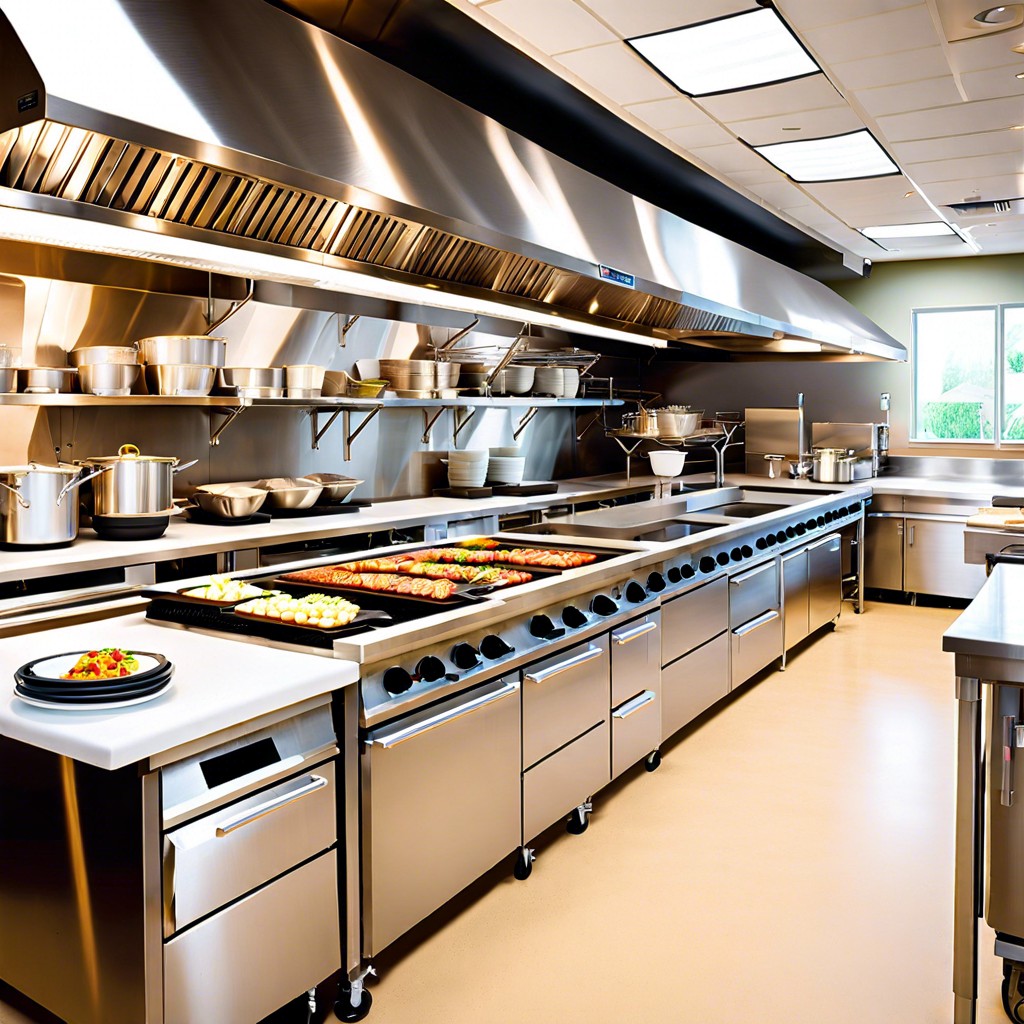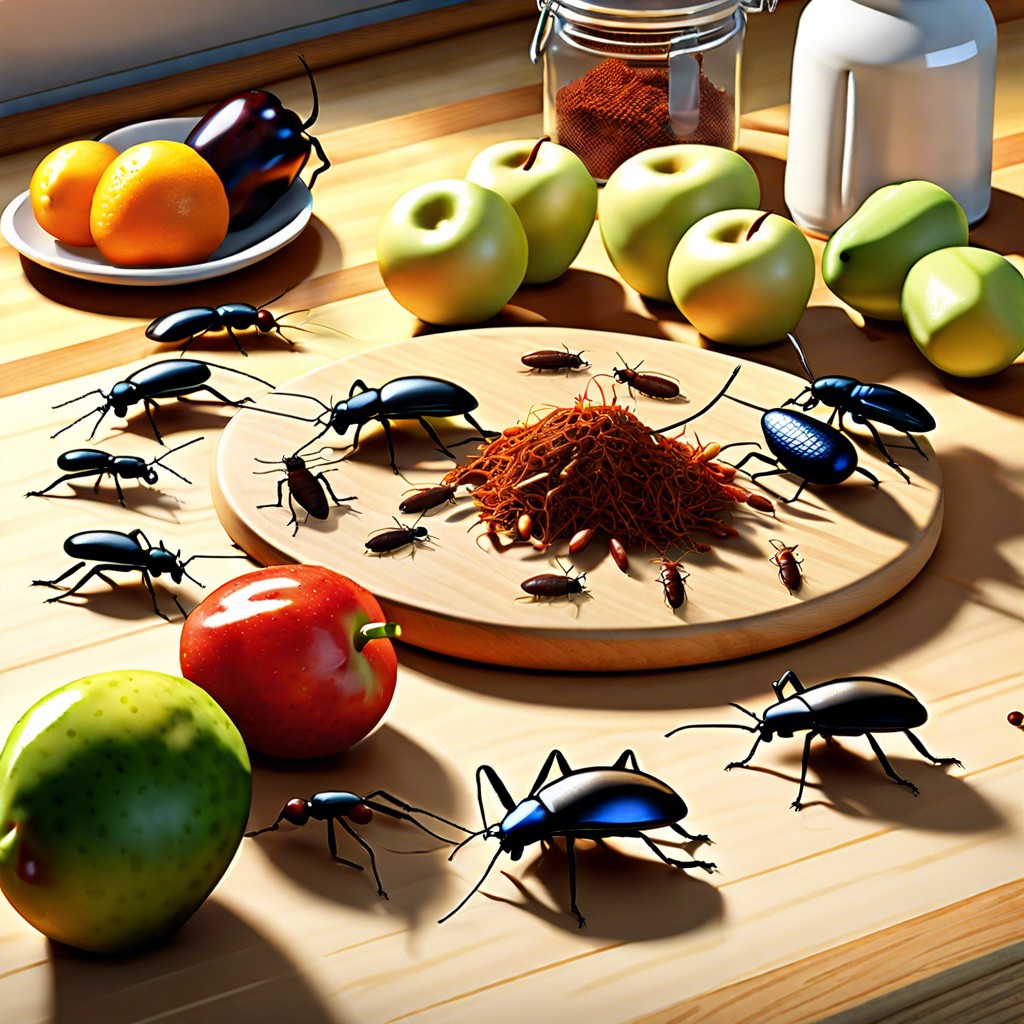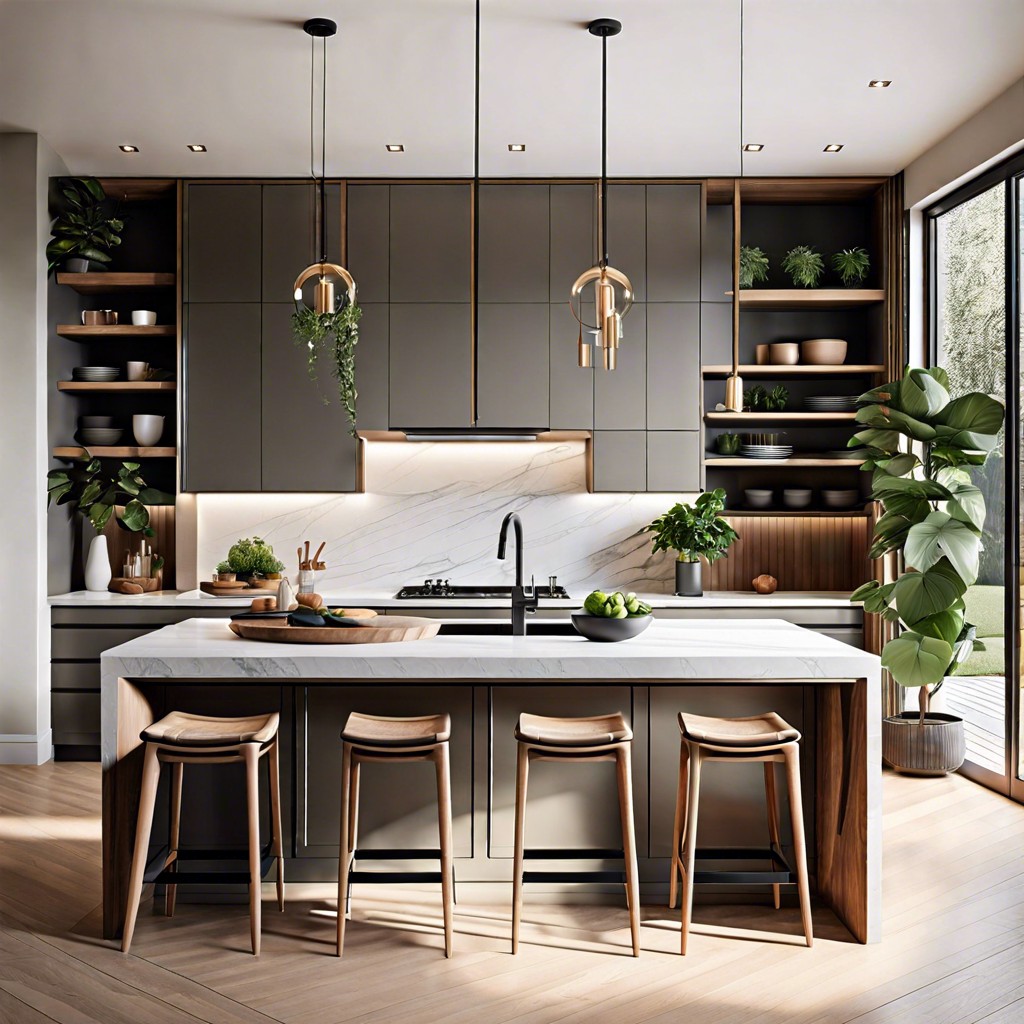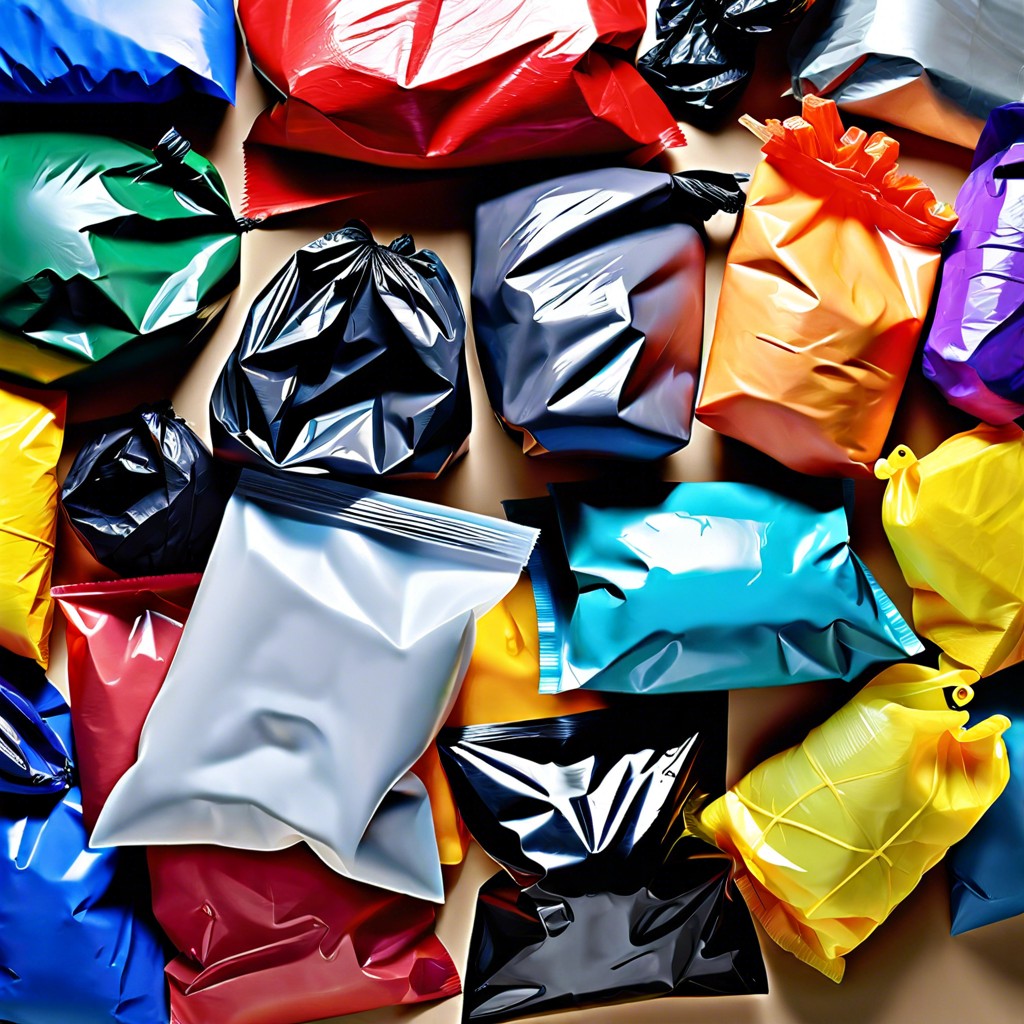Last updated on
Discover the benefits and drawbacks of lining your kitchen cabinets, as we delve into whether it’s a necessary step for maintaining a pristine cooking space.
Have you ever wondered if lining the inside of your kitchen cabinets is really necessary? It’s a question that many homeowners ask themselves when they’re in the process of renovating or redecorating their kitchen. Some say it’s essential, while others see it as an unnecessary expense.
But what’s the truth? In this article, we’ll explore the benefits and drawbacks of lining your kitchen cabinets and help you decide whether it’s a worthwhile investment for your home. So let’s dive in!
What's Inside
Benefits of Lining Cabinets
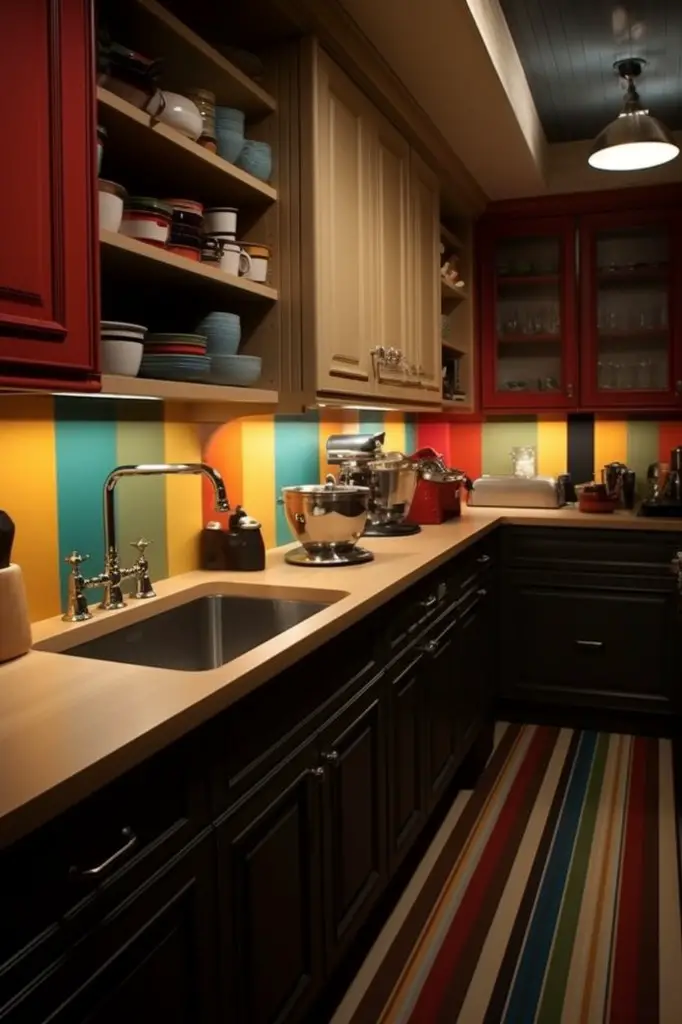
One of the most significant advantages is that liners help protect your cabinets from water damage, which can occur when spills or leaks go unnoticed. By adding a layer between the cabinet and any liquids, you’ll be able to prevent warping and other types of damage.
Another benefit is preventing scratches and scuffs on both the interior surfaces as well as dishes or cookware placed inside them. This will keep your cabinetry looking new for longer periods while also protecting expensive dishware.
Shelf liners are also great at reducing noise levels in busy kitchens by cushioning items such as pots, pans, plates etc., so they don’t clatter against each other every time you open or close a cabinet door.
Protecting Cabinets From Water Damage
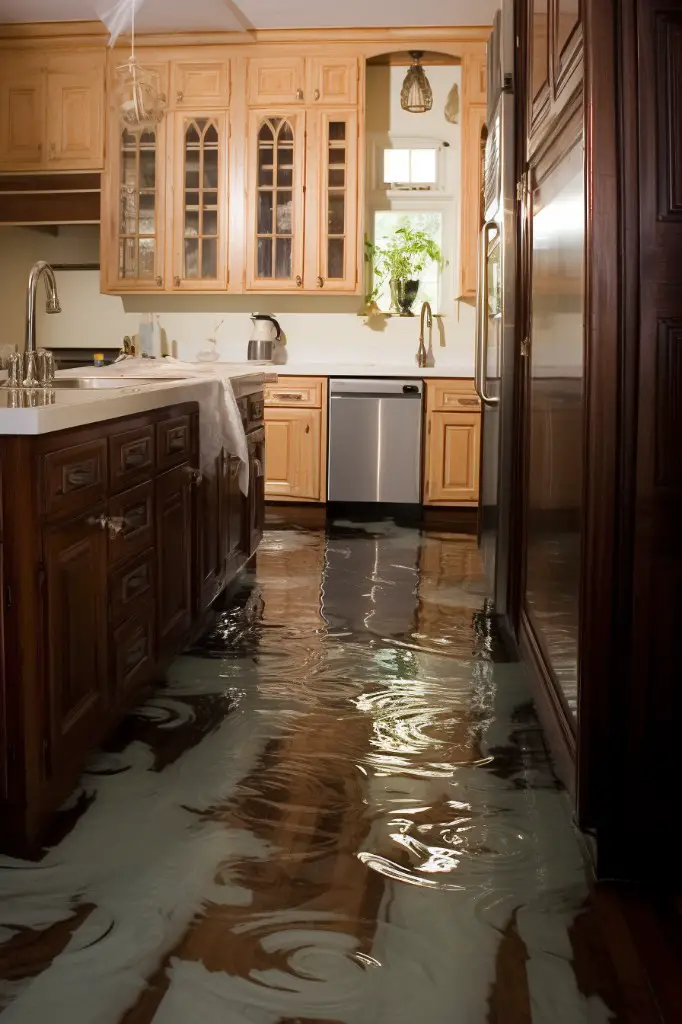
If left unchecked, water can seep into your cabinets and cause serious damage over time. This is where cabinet liners come in handy as they provide an extra layer of protection against moisture.
Lining your kitchen cabinets with waterproof materials such as vinyl or plastic will help prevent water from penetrating the wood or MDF (medium-density fiberboard) material that most cabinets are made of. In addition to protecting against leaks and spills, liners also make it easier to clean up any messes that do occur.
It’s important to note that while cabinet liners can help protect against minor spills and splashes, they won’t be able to prevent major flooding or leaks from causing significant damage. In these cases, it’s best to address the root cause of the problem rather than relying solely on liner protection.
Preventing Scratches and Scuffs
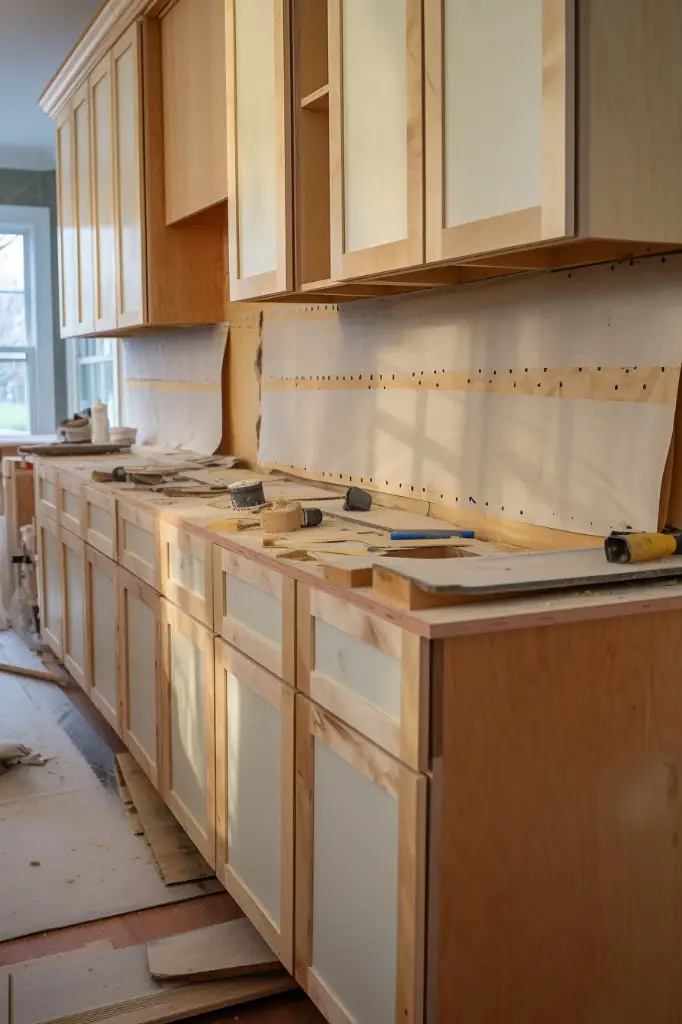
Over time, dishes, pots, pans, and other kitchen items can cause damage to the interior surface of your cabinets. This wear-and-tear not only looks unsightly but can also weaken the structure of your cabinetry.
By adding a protective layer between your belongings and cabinet surfaces with liners made from materials like cork or rubber padding, you’ll reduce friction when sliding items in or out while preventing scratches on both sides.
Noise Reduction With Shelf Liners

The soft padding provided by some types of liners can absorb sound waves, making it a great solution for those who want to create a quieter cooking space.
Not only do shelf liners dampen noise levels in your kitchen, but they also protect your dishes from chipping or breaking due to constant rattling against hard cabinet surfaces. This is especially important if you have delicate glassware that needs extra care.
When choosing a liner for noise reduction purposes, look for materials like cork or foam-backed vinyl that provide cushioning while still being durable enough to withstand daily use. These materials are also easy to clean and maintain over time.
Types of Cabinet Liners
Each type has its own unique features and benefits, so it’s important to consider which one will work best for your needs.
One popular option is adhesive shelf liner. This type of liner sticks directly onto the cabinet surface and provides a non-slip grip for dishes and other items.
Adhesive liners come in a variety of colors and patterns, making them an excellent choice if you want to add some personality or style to your cabinets.
Another common option is non-adhesive shelf liner. This type of liner lays flat on the cabinet surface without any sticky residue, making it easy to remove or reposition as needed.
Non-adhesive liners are typically made from materials like vinyl or rubber that provide cushioning against scratches and dings.
Cork shelf liners are also available for those who prefer a more eco-friendly option that can absorb moisture while providing insulation against heat damage.
Choosing the Right Material
The first is durability. You want a liner that will stand up to daily wear and tear, as well as spills and stains.
Another important factor is ease of cleaning. Some materials may be more difficult to clean than others, which can make maintenance a hassle.
You’ll want to think about aesthetics. While the primary function of cabinet liners is practicality, they can also add some style and personality to your kitchen space.
Some popular options for cabinet liners include cork, rubberized shelf liner paper or adhesive vinyl rolls (also known as contact paper), foam padding sheets or mats made from silicone or plastic mesh material.
Cork provides natural cushioning while being eco-friendly; however it’s not water-resistant so might not be suitable in areas prone with moisture like under sinks. Rubberized shelf liner papers are easy-to-clean but tend not last long due their thinness.
Adhesive vinyl rolls come in various colors & patterns making them an ideal choice if you’re looking for something stylish yet affordable. Foam padding sheets provide extra cushioning but may require frequent replacement due its tendency towards tearing easily when exposed sharp objects such knives etc Silicone mats offer great grip on dishes & utensils while plastic mesh ones allow air circulation preventing mold growth underneath cabinets.
DIY Vs. Purchasing Liners
Both methods have their pros and cons, so it’s important to weigh them carefully before making a decision.
DIY liners can be made from a variety of materials such as contact paper, wallpaper scraps or even fabric. This option is often cheaper than buying pre-made liners and allows for more customization in terms of color and pattern choices.
However, the downside is that DIY projects can be time-consuming and may not always provide the same level of protection as professionally made products.
On the other hand, purchasing pre-made cabinet liners offers convenience since they are ready-to-use right out of the package. They also come in various sizes to fit different types of cabinets perfectly which reduces waste compared with cutting down larger sheets yourself.
However this option tends to cost more than creating your own liner material at home.
Prepping Cabinets for Lining
This will ensure that the liners adhere well and don’t peel off over time. The first step is to remove all items from the cabinets and drawers so that you have a clear workspace.
Next, give your cabinets a thorough cleaning with warm water and soap or an all-purpose cleaner. Make sure they are completely dry before proceeding.
If there are any rough spots or splinters in the wood, sand them down gently with fine-grit sandpaper until smooth. You can also use wood filler to fill in any gaps or holes if necessary.
Measure each cabinet shelf carefully so that you know how much liner material you’ll need for each one. It’s always better to have too much than too little!
Installing Shelf Liners
Before you begin the installation process, make sure that your cabinets are clean and dry. Remove any items from the shelves so that you have a clear workspace.
To install shelf liners, measure each shelf individually using a measuring tape or ruler. Cut the liner to size using scissors or a utility knife.
Be sure to leave an extra inch of material on all sides for trimming later.
Next, peel off the backing paper from one corner of the liner and carefully place it onto one end of the cabinet’s interior surface while smoothing out any bubbles as you go along with your hand or credit card edge tool until it lays flat against its surface without wrinkles before moving on towards another section until all areas are covered.
Adding Color and Style to Cabinets
Cabinet liners come in a variety of colors, patterns, and textures that can complement or contrast with your existing decor. If you’re looking for an easy way to update the look of your kitchen without breaking the bank, consider adding some colorful shelf liners.
One popular option is adhesive vinyl liner paper which comes in various designs such as floral prints or geometric shapes. These are perfect for those who want something bold but don’t want to commit long-term since they can be easily removed if you change your mind later on.
Another option is cork liner which adds texture while also being eco-friendly and sustainable. Cork has natural antimicrobial properties making it ideal for use in kitchens where hygiene matters most.
If you prefer something more subtle yet still stylish, opt for clear plastic liners that protect shelves from spills while allowing the beauty of wood grain or painted finishes underneath shine through.
Using Liners for Drawer Organization
Not only do they protect the bottom of your drawers from scratches and stains, but they also make it easier for you to find what you need quickly.
Using liners for drawer organization can help separate items into categories such as utensils, cutlery or baking tools. You can even use different colored liners for each category so that everything has its place and is easy to locate when needed.
Another benefit of using shelf liner in drawers is that it prevents items from sliding around when opening or closing the drawer. This means no more clanging pots and pans every time you reach in! Plus, if something spills inside the drawer (which inevitably happens), cleaning up will be much easier since all you have to do is remove the liner instead of scrubbing down a bare surface.
When choosing a liner material for your kitchen drawers, consider one with grip properties like rubberized mesh or textured vinyl which will prevent movement while keeping contents safe during transport across surfaces like countertops etcetera.
Cleaning and Maintaining Liners
This will not only help extend their lifespan but also ensure that they continue to provide the benefits you’re looking for.
To clean your cabinet liners, start by removing any items from the shelves or drawers. Then, use a damp cloth or sponge with mild soap to wipe down the liner surface thoroughly.
Avoid using harsh chemicals or abrasive scrubbers as these can damage some types of materials.
For tougher stains like grease or oil spills, try using a mixture of baking soda and water applied with a soft-bristled brush. Let it sit for 10-15 minutes before wiping away with a damp cloth.
It’s also essential to dry off any moisture after cleaning as leaving wet spots on liners can lead to mold growth over time.
If you notice any tears or rips in your cabinet liner material during cleaning sessions – replace them immediately! Damaged shelf liners are less effective at protecting against scratches and scuffs while providing an ideal environment for bacteria growth.
Shelf Liner Cleaning Tips
Over time, dirt, grease, and spills can accumulate on the surface of your liners, making them look unsightly and potentially harboring bacteria. Here are some tips for cleaning your shelf liners:
- Remove the liner from the cabinet or drawer.
- Shake off any loose debris or crumbs.
- Wipe down with a damp cloth or sponge using warm soapy water.
- For tough stains use baking soda paste (baking soda mixed with water) to scrub gently until stain disappears
- Rinse thoroughly with clean water to remove all soap residue
- Allow it to air dry completely before placing it back in its place.
Avoid using harsh chemicals that could damage the material of your liner such as bleach which can cause discoloration over time.
Replacing Old Liners
Over time, liners can become worn or damaged and may need replacing. When this happens, it’s best to remove the old liner completely before installing a new one.
To replace an old liner, start by removing all items from the cabinet and taking out any shelves if necessary. Then carefully peel off the existing liner from each surface of the cabinet.
Once you have removed all traces of adhesive residue left behind by your previous shelf lining material (if there is any), measure each surface that needs a new lining with precision so that you don’t end up wasting materials or having gaps between sections.
Next step is cutting your new shelf paper according to those measurements using scissors or a utility knife for more precise cuts on thicker materials like cork board liners which are great for absorbing moisture while providing cushioning protection against scratches and dents caused by heavy pots/pans etc., especially when placed on top of glass shelves where they could easily break due their weight distribution being unevenly distributed across such surfaces over time!
Common Lining Mistakes
One of the most common mistakes is not measuring properly before cutting the liner material. This can result in liners that are too short or too long, leaving gaps or bunching up inside the cabinet.
Another mistake is using adhesive liners on unfinished wood surfaces. Adhesive liners may seem like a good idea for keeping things in place, but they can actually cause damage to unfinished wood by pulling off layers of paint or varnish when removed.
Using low-quality materials is another mistake many people make when lining their cabinets. Cheap materials may save you money upfront but will likely need replacing sooner than higher quality options and could even cause more harm than good if they contain harmful chemicals.
Lastly, failing to clean and maintain your cabinet liners regularly could lead to mold growth or unpleasant odors over time. It’s important to remove any spills promptly and wipe down your shelf liner with soap and water periodically.
Pros and Cons of Lining
On the one hand, cabinet liners can help protect your cabinets from water damage, scratches, and scuffs. They can also reduce noise levels in the kitchen by cushioning dishes as they’re placed on shelves.
Using shelf liners is an easy way to add a pop of color or pattern to your cabinets without having to commit to a full-on renovation. And if you’re someone who loves organization (who doesn’t?), then drawer liners are an excellent tool for keeping utensils and other small items neatly arranged.
On the other hand, some homeowners may find that cabinet liners aren’t necessary for their particular situation. For example, if you have high-quality cabinetry made from durable materials like hardwood or metal alloys that won’t scratch easily or be damaged by moisture exposure – then adding liner might not be worth it.
Moreover installing shelf liner requires time-consuming preparation work such as cleaning out all drawers before installation which could take up valuable time especially when dealing with large kitchens.
Dealing With Sticky Liners
Over time, some types of shelf liners can become tacky and difficult to remove. This can be caused by a buildup of dirt and grime or exposure to heat and humidity.
To deal with sticky liners, start by removing any items from the affected shelves. Then try using warm soapy water or a cleaning solution specifically designed for removing adhesive residue.
Gently scrub the liner until it starts to loosen up.
If that doesn’t work, try using rubbing alcohol or vinegar on a cloth instead – both are effective at breaking down adhesives without damaging surfaces underneath.
In some cases, it may be necessary to replace old shelf liners entirely if they’re beyond salvaging. When choosing new ones, look for non-adhesive options that won’t leave behind any residue in case you need to change them out again in the future.
Potential Hidden Damage
One common issue is the accumulation of moisture between the liner and cabinet surface, which can lead to mold growth or even wood rot over time. This is especially true if you live in a humid climate or have a leaky faucet nearby.
Another concern is with adhesive liners that are difficult to remove without damaging the cabinet surface underneath. If you decide to change out your liners down the road, you may find yourself dealing with sticky residue or peeling paint.
To avoid these issues, make sure to choose high-quality materials and regularly inspect your cabinets for any signs of damage or wear-and-tear caused by lining them. Consider using non-adhesive options like cork shelf liners instead of traditional sticky varieties.
FAQ
What is the best thing to line kitchen cabinets with?
The best thing to line kitchen cabinets with is non-adhesive vinyl, as it is durable, easy to clean, and protects surfaces from scratches and stains.
Do you really need shelf liners?
Yes, shelf liners are necessary as they protect your drawers and shelves from water damage, stains, spills, and scratches, especially in the kitchen and bathroom.
Do you need to put shelf liner in new cabinets?
While not necessary, using shelf liner in new cabinets is recommended to prevent moisture damage to cabinets and drawers.
What do people line their kitchen cabinets with?
People line their kitchen cabinets with shelf liners to protect against nicks and scratches from cookware and small appliances.
Are there any eco-friendly materials available for lining kitchen cabinets?
Yes, eco-friendly materials like recycled or reclaimed wood, bamboo, or low-VOC particleboard are available for lining kitchen cabinets.
How often should you replace or clean shelf liners in kitchen cabinets?
Shelf liners in kitchen cabinets should be replaced or cleaned at least once every six months to maintain cleanliness and organization.
What are the advantages and disadvantages of using adhesive versus non-adhesive shelf liners?
Adhesive shelf liners offer a secure grip and smooth surface, while non-adhesive liners are easy to reposition and remove without leaving residue, but may not offer the same level of grip and stability.
